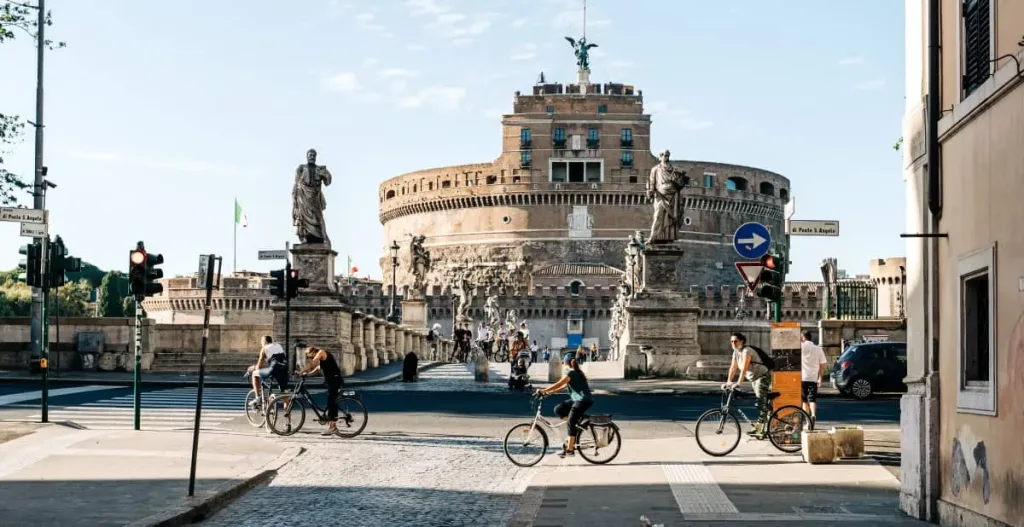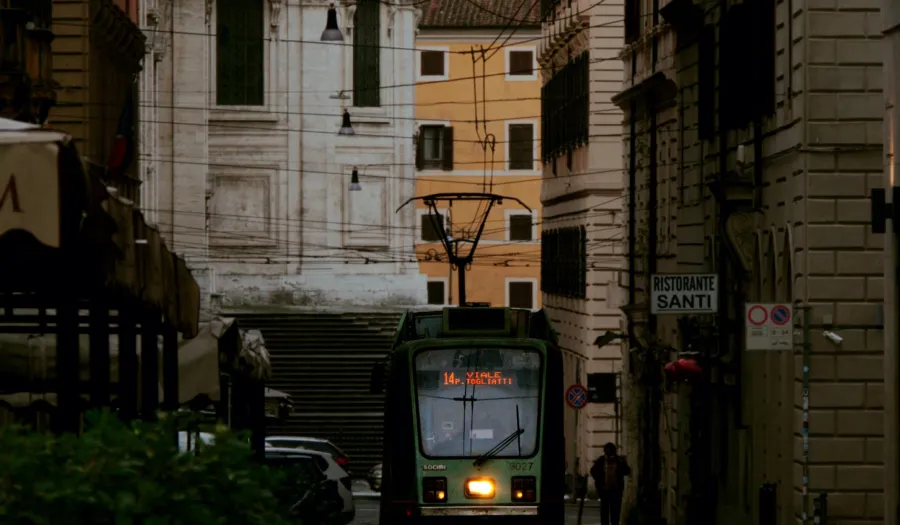How to get around Rome

Exploring Rome is an adventure, thanks to its diverse transportation options that cater to every traveler. Whether you prefer the efficiency of the Rome Metro, the extensive bus network, the charm of trams, or the convenience of taxis, this guide will navigate you through each mode of transportation. Let’s delve into the insights of Rome’s public transport system to help you decide your mode of transportation for a comfortable Rome tour.
Rome Metro – The Backbone of Public Transport
The Rome Metro is the city’s underground subway system, offering a fast and efficient way to navigate the bustling streets of the Italian capital. The Rome Metro map consists of three main lines, each designated by a color: Line A (red), Line B (blue), and Line C (green). These lines serve different areas of the city and connect passengers to various landmarks and neighborhoods.
The Rome Metro hours vary from approximately 5:30 AM to 11:30 PM, although schedules may vary slightly on weekends and holidays. Night buses are available for late-night transportation once the metro has closed.
Using Metro
- Frequent Service: Trains on the Rome Metro generally run with high frequency, ensuring minimal waiting time for passengers. This is especially important during peak hours when the metro experiences heavy usage.
- Ticketing Options: Passengers can purchase Rome metro tickets for single rides, day passes, or longer durations, such as the Roma Pass, which provides unlimited travel on public transport for a specified number of days. Metro tickets can be bought at metro stations, newsstands, and authorized retailers.
- Accessibility: Many metro stations in Rome are equipped with elevators and escalators to accommodate passengers with mobility challenges. Additionally, station names and signage are often displayed in both Italian and English, making it accessible to tourists.

Rome Bus – Exploring the City’s Heart
Rome’s bus network is a comprehensive and budget-friendly way to explore the city’s heart and reach areas not served by the metro, The extensive coverage ensures that even areas not directly served by the metro can be accessed by bus. To simplify navigation, Roma Bus routes are color-coded. Each bus line is associated with a specific color, and the buses themselves often display these colors prominently. This system helps passengers quickly identify the correct bus for their destination. Rome Bus Map is also a valuable resource. It can be used, but understanding the Rome bus map can be a bit daunting due to the extensive network.
Using Buses
- Accessible Stops: Bus stops in Rome are well-marked and often equipped with information boards displaying route details, schedules, and estimated arrival times. This information is available in both Italian and English, making it accessible to tourists.
- Bus Schedules: Buses in Rome typically run with high frequency, especially during peak hours. This means you won’t have to wait long for the next bus to arrive, making it a convenient mode of transport.
- Integrated Tickets: Tickets for the Roma Bus system are typically integrated with the city’s broader public transport network, including the metro and trams. This means a single ticket can be used for multiple modes of transport within a specific timeframe, allowing for transfers and flexible travel.
- Night Buses: Rome’s bus network extends into the late evening, with night buses (marked as “N” before the route number) providing transportation even after the metro has closed for the night. Night buses are a valuable option for those enjoying Rome’s nightlife or returning from late events.
Rome Tram – A Scenic Ride Through History
The Rome tram system is an excellent addition to Rome’s public transportation system, providing convenience and facilitation of viewing all corners of the city with ease. Rome tram ensures that both locals and visitors can travel to Rome with comfort. While traveling through Rome’s picturesque streets, these trams offer a singular opportunity to not only get about the city quickly but also to fully experience its rich history and atmosphere.
Rome Tram Routes: Trams run along several scenic routes, connecting various neighborhoods. Tram line 8 is especially popular as it passes through the historic center, taking you past the Colosseum, Roman Forum, and Trastevere. Riding Tram Line 8 is not just a practical way to get around; it’s also a delightful way to take in the beauty of Rome.
Rome Tram Tickets: As with buses and the metro, Rome tram tickets are easily accessible. Ticket validation is required upon boarding trams, and like buses, you can use single tickets for multiple tram rides within a specific timeframe.
Rome public transportation map, which combines all three modes of transportation that is Rome metro, Rome bus, and Rome tram, gives an overview of the city’s transit choices. It’s a useful tool for route planning since it enables you to easily move between the metro, bus, and tram to get where you’re going.

Rome Taxis: Hail a Taxi Ride
Taxis in Rome offer on demand and door to door transportation, making them a popular choice for those seeking convenience and comfort. Taxis can be hailed on the street or found at designated taxi stands throughout Rome. Recognizable by their white color and “TAXI” sign on the roof, these vehicles are readily available. Taxis in Rome operate on a metered fare system. When you begin your journey, the initial fare is displayed on the meter. Always ensure that the taxi’s meter is running from the start of your trip. Even though taxis are more expensive than public transportation but they offer a direct and pleasant form of transportation, making them a popular option for travelers and individuals looking for convenience.